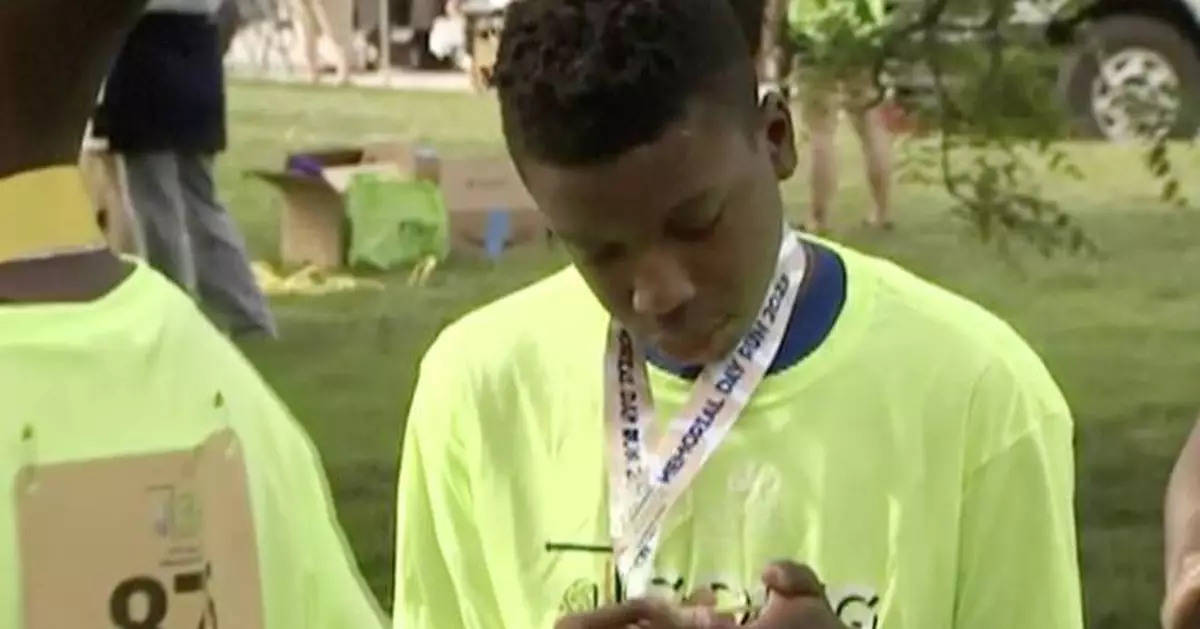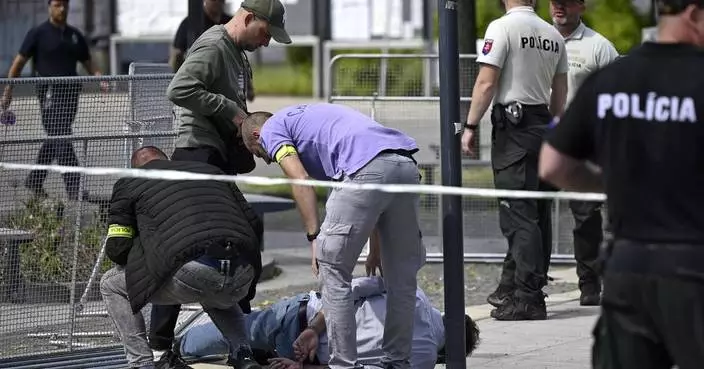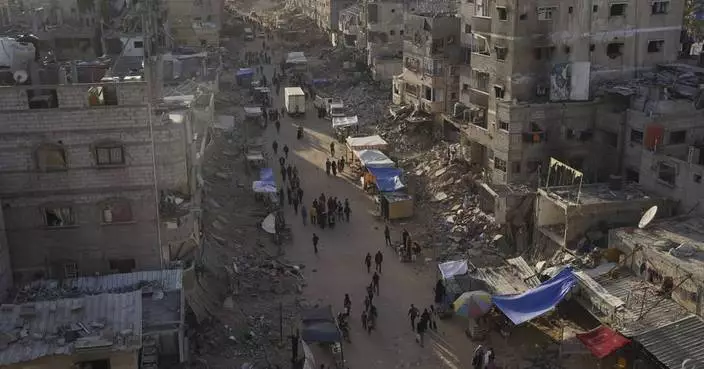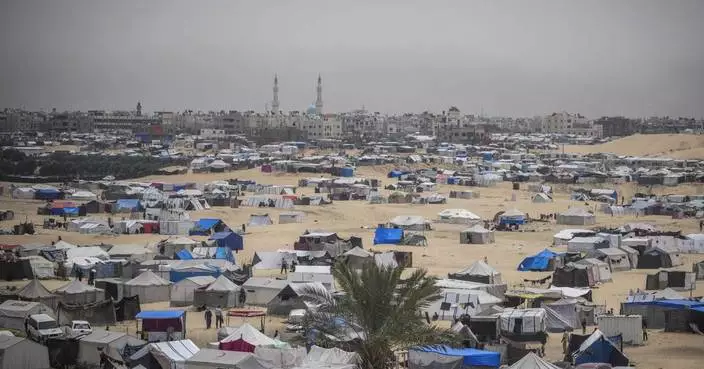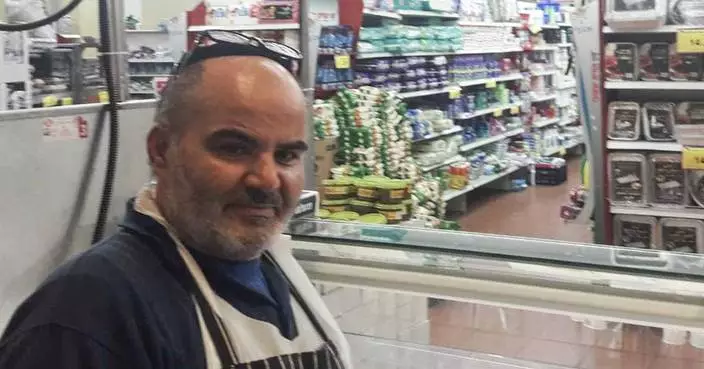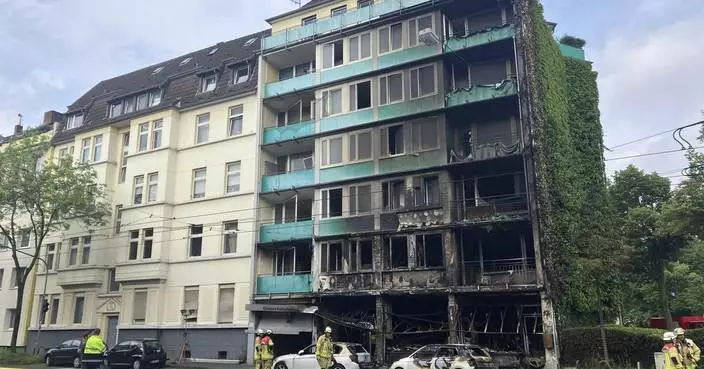The family of a Black teenager who was shot by a white homeowner when he mistakenly went to the wrong Kansas City, Missouri, address filed a lawsuit Monday, described by the family's attorney as an attempt to put pressure on the criminal trial later this year.
The complaint, filed by Cleo Nagbe on behalf of her son, Ralph Yarl, alleges that Andrew Lester, 84, was negligent when he shot the 16-year-old without warning more than a year ago, on April 13. It states that Yarl suffered and sustained permanent injuries, as well as pain and suffering, as a direct result of Lester's actions.
Lee Merritt, the family’s attorney, said the civil suit is to “give the family a chance to be in the driver’s seat in pursuing justice for Ralph” as the state’s criminal case against Lester unfolds.
Lester pleaded not guilty in September 2023. The trial was scheduled to begin more than a year later on October 7, 2024.
Lester’s attorney in the criminal case, Steve Salmon, said he is evaluating the civil complaint and will discuss it with Lester. He said at a preliminary hearing for the criminal case that Lester was acting in self-defense, terrified by the stranger who knocked on his door as he settled into bed for the night.
“The suit is based on what he has said,” Merritt told The Associated Press. “If he’s saying, ‘I mistakenly thought this person was a robber,’ we’re saying that’s negligence. You weren’t paying close enough attention. Everybody who rings your doorbell can’t be a robber.”
Yarl mixed up the street name of the house where he was sent to pick up his siblings. Yarl testified at the hearing that he rang the doorbell and then reached for the storm door as Lester opened the inner door. Lester told him, “Don’t come here ever again,” Yarl recalled.
He said he was shot in the head, the impact knocking him to the ground, and was then shot in the arm.
The case, which drew international attention, animated national debates about gun policies and race in America.
In a statement, Nagbe said the shooting “not only shattered our family but also exposed a critical gap in our societal fabric, where the safety of our children is jeopardized by reckless actions.”
The lawsuit also names the homeowner’s association, Highland Acres Homes Association, Inc., as a defendant. The association did not immediately respond to an email requesting comment.
Merritt said the family is aware the litigation might be delayed pending the outcome of the criminal case but wanted to still begin the process. He cited state law that allows the victim access to the criminal case records that has not yet been satisfied, as the prosecutor seeks clarification from the judge on the case’s gag order.
Yarl was “uniquely resilient” after the shooting, Merritt said, but “his resiliency has kind of grown into some impatience with being the person who was shot a year ago.”
“He doesn’t want to be that person,” Merritt said. “He wants to be an amazing band player, a good friend, a student, a rising college student.”

FILE - Andrew Lester appears in court to answer charges of first-degree assault and armed criminal action, April 19, 2023, in Liberty, Mo. The family of Ralph Yarl, a Black teenager who was shot when he mistakenly went to the wrong home in Kansas City, Mo., filed a lawsuit Monday, April 29, 2024, against Lester, the white 84-year-old homeowner, an attempt to pursue justice from the “driver’s seat” and put pressure on the criminal trial scheduled for later this year, the family's attorney said. (KMBC via AP, Pool, File)

FILE - Ralph Yarl looks at a badge that he received after walking at a brain injury awareness event, May 29, 2023, in Kansas City, Mo. The family of Yarl, a Black teenager who was shot when he mistakenly went to the wrong home in Kansas City, Mo., filed a lawsuit Monday, April 29, 2024, against the white 84-year-old homeowner, an attempt to pursue justice from the “driver’s seat” and put pressure on the criminal trial scheduled for later this year, the family's attorney said. (KCTV via AP, File)
WASHINGTON (AP) — The U.S. military finished installing a floating pier for the Gaza Strip on Thursday, with officials poised to begin ferrying badly needed humanitarian aid into the enclave besieged over seven months of intense fighting in the Israel-Hamas war.
The final, overnight construction sets up a complicated delivery process more than two months after U.S. President Joe Biden ordered it to help Palestinians facing starvation as food and other supplies fail to make it in as Israel recently seized the key Rafah border crossing in its push on that southern city on the Egyptian border.
Fraught with logistical, weather and security challenges, the maritime route is designed to bolster the amount of aid getting into the Gaza Strip, but it is not considered a substitute for far cheaper land-based deliveries that aid agencies say are much more sustainable. The boatloads of aid will be deposited at a port facility built by the Israelis just southwest of Gaza City and then distributed by aid groups.
Heavy fighting between Israeli troops and Palestinian militants on the outskirts of Rafah has displaced some 600,000 people, a quarter of Gaza’s population, U.N. officials say. Another 100,000 civilians have fled parts of northern Gaza now that the Israeli military has restarted combat operations there.
Pentagon officials said the fighting in Gaza wasn’t threatening the new shoreline aid distribution area, but they have made it clear that security conditions will be monitored closely and could prompt a shutdown of the maritime route, even just temporarily. Already, the site has been targeted by mortar fire during its construction and Hamas has threatened to target any foreign forces who “occupy” the Gaza Strip.
The “protection of U.S. forces participating is a top priority. And as such, in the last several weeks, the United States and Israel have developed an integrated security plan to protect all the personnel," said Navy Vice Adm. Brad Cooper, a deputy commander at the U.S. military's Central Command. "We are confident in the ability of this security arrangement to protect those involved.”
U.S. troops anchored the pier at 7:40 a.m. local time Thursday, the military's Central Command said, stressing that none of its forces entered the Gaza Strip and would not during the pier's operations.
“Trucks carrying humanitarian assistance are expected to begin moving ashore in the coming days,” the command said. “The United Nations will receive the aid and coordinate its distribution into Gaza.”
It wasn't immediately clear which U.N. agency would be involved.
Israeli forces will be in charge of security on the shore, but there are also two U.S. Navy warships near the area in the eastern Mediterranean Sea, the USS Arleigh Burke and the USS Paul Ignatius. Both ships are destroyers equipped with a wide range of weapons and capabilities to protect American troops off shore and allies on the beach.
Aid agencies say they are running out of food in southern Gaza and fuel is dwindling, which will force hospitals to shut down critical operations and halt truck deliveries of aid. The U.N. and others have warned for weeks that an Israel assault on Rafah would cripple humanitarian operations and cause a disastrous surge in civilian casualties.
More than 1.4 million Palestinians — half of Gaza’s population — have been sheltering in Rafah, most after fleeing Israel’s offensives elsewhere.
The first cargo ship loaded with 475 pallets of food left Cyprus last week to rendezvous with a U.S. military ship, the Roy P. Benavidez, which is off the coast of Gaza. The pallets of aid on the MV Sagamore were moved onto the Benavidez. The Pentagon said moving the aid between ships was an effort to be ready so it could flow quickly once the pier and the causeway were installed.
The installation of the pier several miles (kilometers) off the coast and of the causeway, which is now anchored to the beach, was delayed for nearly two weeks because of bad weather. The sea conditions made it too dangerous for U.S. and Israeli troops to secure the causeway to the shore, U.S. officials said.
Military leaders have said the deliveries of aid will begin slowly to ensure the system works. They will start with about 90 truckloads of aid a day through the sea route, and that number will quickly grow to about 150 a day. But aid agencies say that isn't enough to avert impending famine in Gaza and must be just one part of a broader Israeli effort to open land corridors.
Because land crossings could bring in all the needed aid if Israeli officials allowed, the U.S.-built pier-and-sea route “is a solution for a problem that doesn’t exist,” said Scott Paul, an associate director of the Oxfam humanitarian organization.
Biden used his State of the Union address on March 7 to order the military to set up a temporary pier off the coast of Gaza, establishing a sea route to deliver food and other aid. Food shipments have been backed up at land crossings amid Israeli restrictions and intensifying fighting.
Under the new sea route, humanitarian aid is dropped off in Cyprus where it will undergo inspection and security checks at Larnaca port. It is then loaded onto ships — mainly commercial vessels — and taken about 200 miles (320 kilometers) to the large floating pier built by the U.S. military off the Gaza coast.
There, the pallets are transferred onto trucks, driven onto smaller Army boats and then shuttled several miles (kilometers) to the floating causeway, which has been anchored onto the beach by the Israeli military. The trucks, which are being driven by personnel from another country, will go down the causeway into a secure area on land where they will drop off the aid and immediately turn around and return to the boats.
Aid groups will collect the supplies for distribution on shore, with the U.N. working with the U.S. Agency for International Development to set up the logistics hub on the beach.
Sabrina Singh, Pentagon spokeswoman, told reporters that the project will cost at least $320 million, including the transportation of the equipment and pier sections from the United States to the coast of Gaza, as well as the construction and aid delivery operations.
Associated Press writer Jon Gambrell in Dubai, United Arab Emirates, contributed to this report.

US military says Gaza Strip pier project is completed, aid to soon flow as Israel-Hamas war rages on
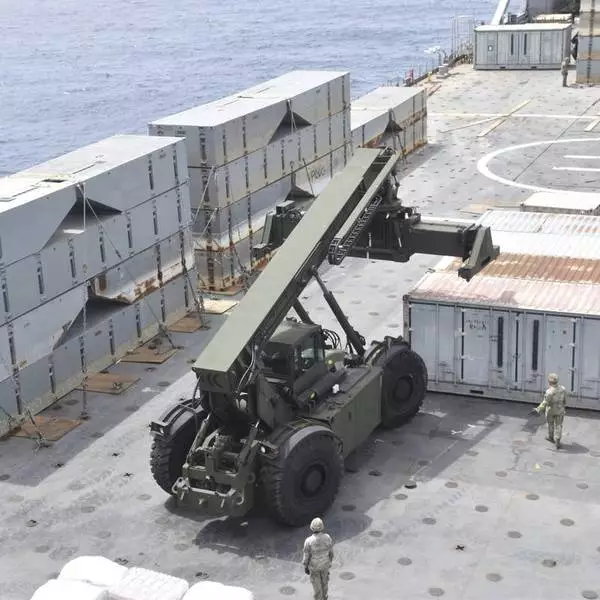
US military says Gaza Strip pier project is completed, aid to soon flow as Israel-Hamas war rages on

In this image provided by the U.S. Army, soldiers assigned to the 7th Transportation Brigade (Expeditionary) and sailors attached to the MV Roy P. Benavidez assemble the Roll-On, Roll-Off Distribution Facility (RRDF), or floating pier, off the shore of Gaza on April 26, 2024. The U.S. expects to have on-the-ground arrangements in Gaza ready for humanitarian workers to start delivering aid this month via a new U.S.-backed sea route for Gaza aid. An official with the U.S. Agency for International Development tells the AP that humanitarian groups expect to have their part of preparations complete by early to mid-month. (U.S. Army via AP)




